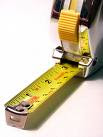


 So here we are once again at the Holiday season. Yes, I love the holidays but my enthusiasm for decking the house out is not what it once was. It's a lot of work to drag out all those boxes of Christmas goodies. And it's a lot of work to do it when you're doing it alone. Yes, I have family and they are wonderful but they are much more into looking at the decorations once I've done them then they are into helping me deck the halls.
So here we are once again at the Holiday season. Yes, I love the holidays but my enthusiasm for decking the house out is not what it once was. It's a lot of work to drag out all those boxes of Christmas goodies. And it's a lot of work to do it when you're doing it alone. Yes, I have family and they are wonderful but they are much more into looking at the decorations once I've done them then they are into helping me deck the halls. Last year was the first year of my adult life that I did not put up a tree. GASP! It was with equal portions of protest (as in I am NOT doing all of this work alone. Again) and laziness. What I discovered-though my family does not quite agree-is that it is definitely possible to make your home look festive without putting up a Christmas tree. This may sound Bah Humbug! but it is definitely not Blah Humbug!
Last year was the first year of my adult life that I did not put up a tree. GASP! It was with equal portions of protest (as in I am NOT doing all of this work alone. Again) and laziness. What I discovered-though my family does not quite agree-is that it is definitely possible to make your home look festive without putting up a Christmas tree. This may sound Bah Humbug! but it is definitely not Blah Humbug!I've found that by pulling out my very favorite Holiday decorations and adding some fresh greens and flowers, I can make the house look pretty festive without dealing with strings of lights and boxes of ornaments. I agree that a lot of the spirit of Christmas is visual, but I've also found that Christmas music playing and the scent of cinnamon and pine really pulls that visceral feeling of Christmas all together. So it is with scented candles and Nat King Cole that I round out my Holiday decorating.

Traditions can change, at least it's okay for the outward signs of tradition to change. Isn't the important thing to remember what Christmas is really all about? And I don't mean ever increasing numbers of gift cards piling up. It's about honoring the birth of Jesus and in doing that, honoring our relationships with our loved ones. At least that's what it means more and more to me.
I'm learning to de-stress the Holidays and by scaling back on my Holiday decorating, I'm doing just that. I love the season: parties, baking, entertaining and being with the people I care about most in the world. But I don't love dealing with the dressing up and the inevitable dressing down of the season. So here are a few of my ideas for adding the Holiday feeling to my home in about two hours rather than the previous two days!



 inets! The result is really beautiful and updated the looks of her home tremendously.
inets! The result is really beautiful and updated the looks of her home tremendously.




